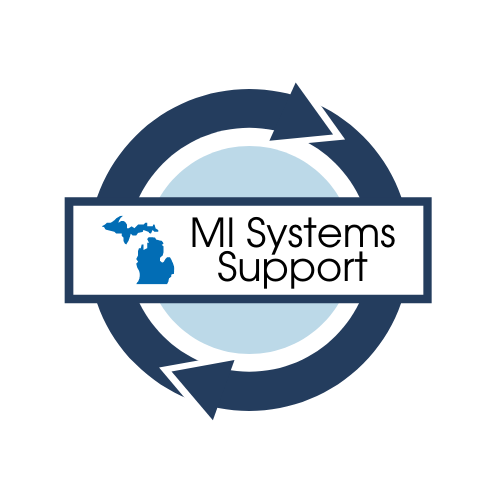
Collaborative Learning Cycles
References
-
Bernhardt, V.L. (2013). Data analysis: for continuous school improvement. Routledge.
Data Quality Campaign. (2011, June 24). Data is power [Video]. YouTube. https://www.youtube.com/watch?v=77UPUxB2b7o
Lipton, L., & Wellman, B. (2012). Got data? Now what?: Creating and leading cultures of inquiry. Solution Tree Press.
Michigan Department of Education. (2022). Michigan Integrated Continuous Improvement Process (MICIP). https://www.michigan.gov/documents/mde/MICIP_Process_Guide_713924_7.pdf
Michigan Department of Education, (2020). Michigan Department of Education Multi-Tiered System of Supports Practice Profile vs 5.0, Lansing, Michigan.
-
Bernhardt, V.L. (2013). Data analysis: for continuous school improvement. Routledge.
Johnson, R. S., & Avelar La Salle, R. (2010). Data strategies to uncover and eliminate hidden inequities: The wallpaper effect. Corwin Press.
Lipton, L., & Wellman, B. (2012). Got data? Now what?: Creating and leading cultures of inquiry. Solution Tree Press.
MSU Office of K-12 Outreach. (2014, March 19). Bruce Wellman “Got Data? Now What?” and the Collaborative Learning Cycle [Video]. YouTube. https://www.youtube.com/watch?v=2XBElZVOiBc&list=PLtxEmiz7rZYvQvR8g7b8phqC6TCixpZU4&index=2
U.S. Department of Education, Office of Planning, Evaluation, and Policy Development, (2010, January). Use of Education Data at the Local Level From Accountability to Instructional Improvement. http://www.ed.gov/about/offices/list/opepd/ppss/reports.html#edtech
-
Fullan, M., & Gallagher, M. J. (2020). The devil is in the details: System solutions for equity, excellence, and student well-being. Corwin.
Hattie, J. (2015). What works best in education: The politics of collaborative expertise. Pearson.
Lipton, L., & Wellman, B. (2012). Got data? Now what?: Creating and leading cultures of inquiry. Solution Tree Press.
Peters, T.J., & Waterman, R. H., Jr. (1982). In search of excellence: Lessons from America’s best-run companies (Presumed First Edition). Harper & Row.
-
Lipton, L., & Wellman, B. (2012). Got data? Now what?: Creating and leading cultures of inquiry. Solution Tree Press.
MSU Office of K-12 Outreach. (2014, March 19). Bruce Wellman: Phase one - activate & engage [Video]. YouTube. https://www.youtube.com/watch?v=upLvc34bRg4
MSU Office of K-12 Outreach. (2014, March 19). Bruce Wellman: Phase two - explore & discover [Video]. YouTube. https://www.youtube.com/watch?v=E3WtXFgKzWQ&list=PLVM95iKA7AFgYu_Wy7qoQnizXDEU50Cn1&index=8
MSU Office of K-12 Outreach. (2015, September 30). Bruce Wellman: Phase three - organize & integrate [Video]. YouTube. https://www.youtube.com/watch?v=n_S6TkY55Qc
Young, D. (2016, March 23). Five Whys Jefferson Memorial example [Video]. YouTube. https://www.youtube.com/watch?v=BEQvq99PZwo&t=22s
-
Eye on Tech. (2020, May 26). What is a fishbone diagram (Ishikawa Diagram)? [Video]. YouTube. https://www.youtube.com/watch?v=4eteSMuum6k
Garmston, R. and Wellman, B. (2019). Adaptive schools foundation seminar learning guide. Thinking Collaborative.
Lean Enterprise Institute. (2018, July 19). Clarifying the ‘5 whys’ problem-solving method [Video]. YouTube. https://www.youtube.com/watch?v=SrlYkx41wEE
Lipton, L., & Wellman, B. (2012). Got data? Now what?: Creating and leading cultures of inquiry. Solution Tree Press.
Michigan Department of Education. (2022). Michigan Integrated Continuous Improvement Process (MICIP). https://www.michigan.gov/documents/mde/MICIP_Process_Guide_713924_7.pdf
